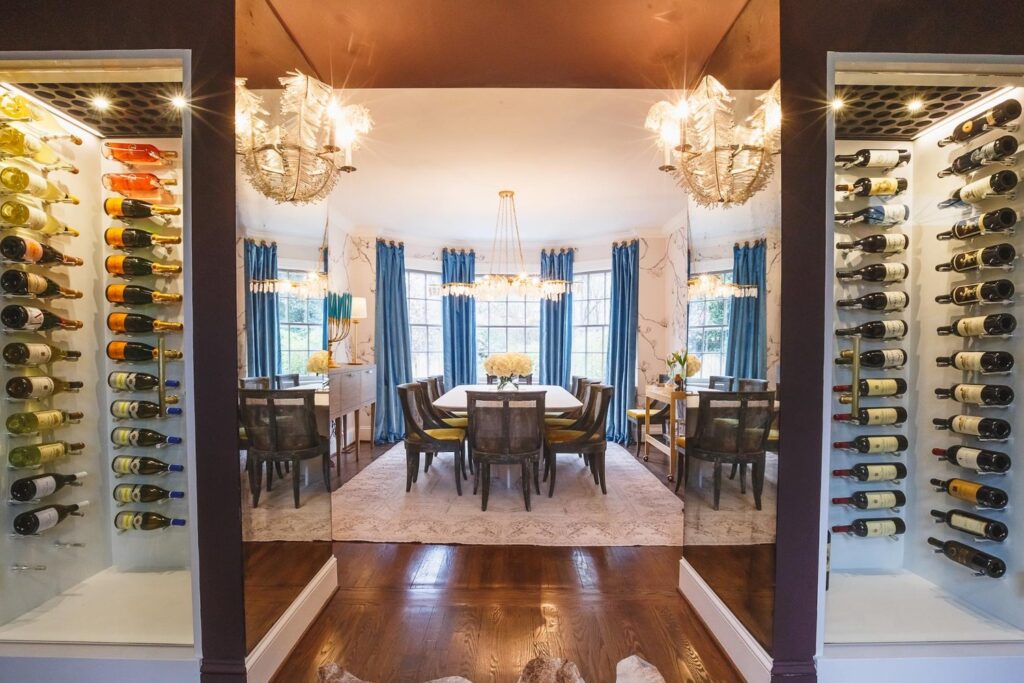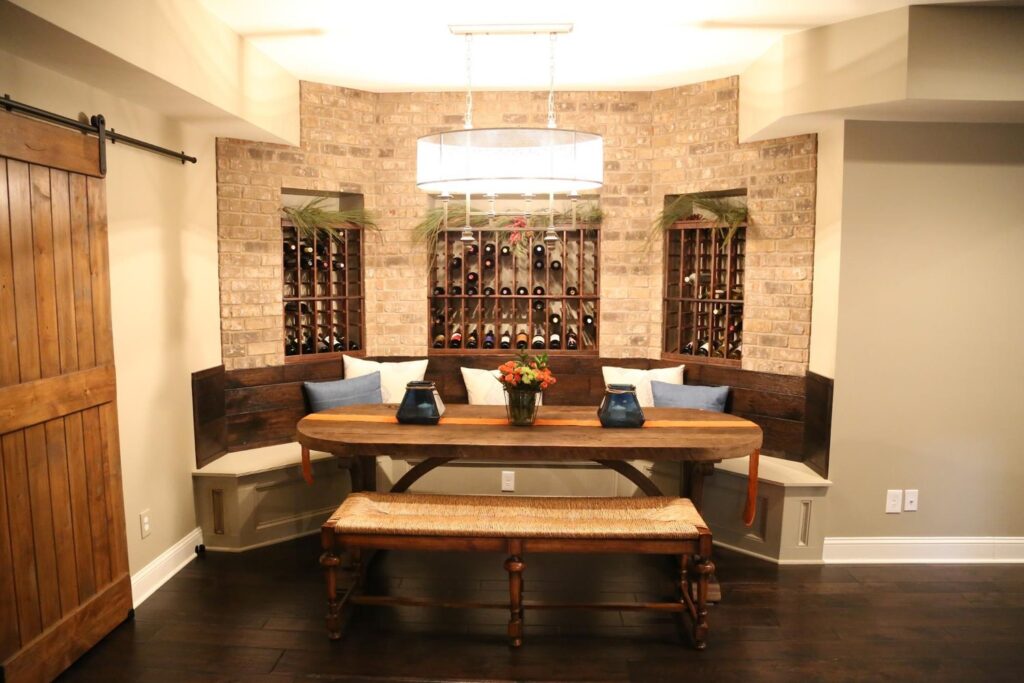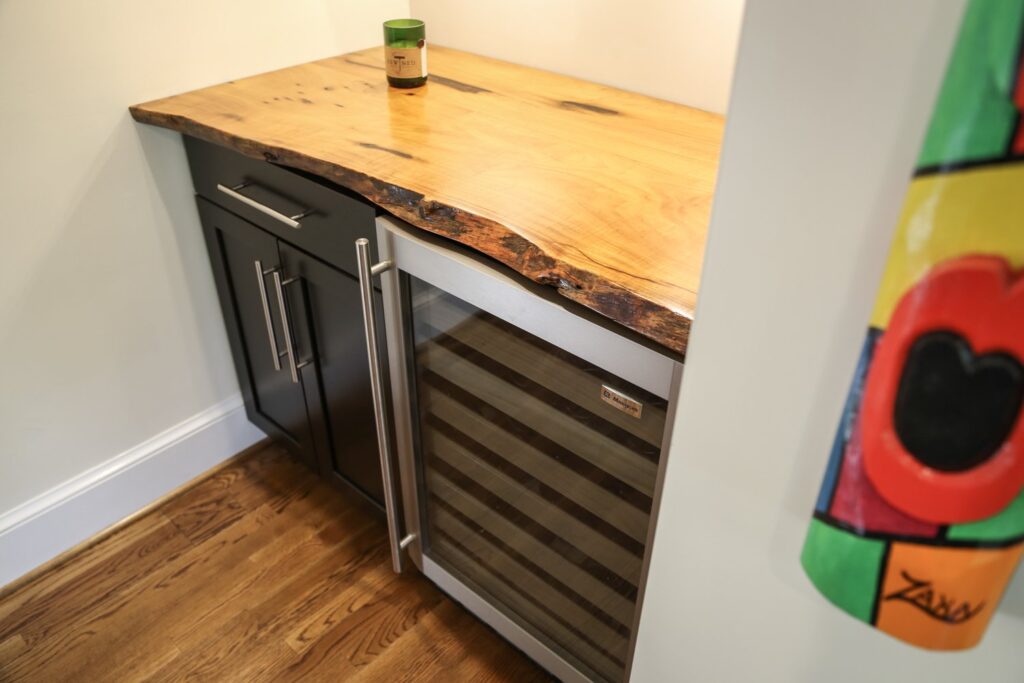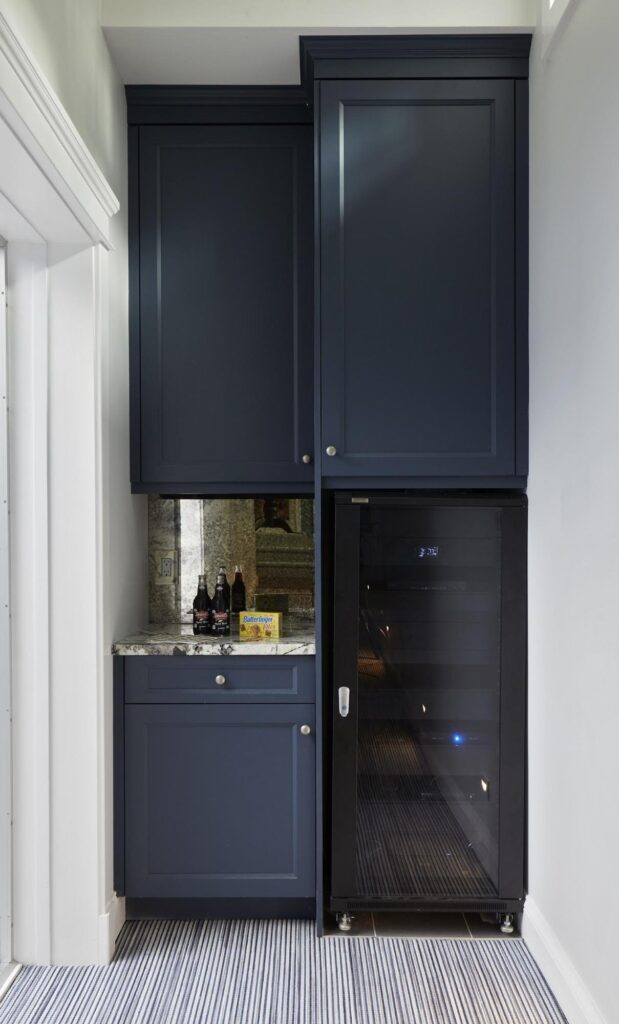Whether you’re an avid collector or casual but enthusiastic drinker of wine, having a place to store those bottles can be a challenge.
At James River Construction (JRC)
Whether you’re an avid collector or casual but enthusiastic drinker of wine, having a place to store those bottles can be a challenge.
Custom wine cellars are nothing new to the world of high-end home construction, but over the last several years we’ve seen some changes in their approach and application. For many years, constructing a wine cellar meant dedicating an entire space in the home to a room used primarily to store (and sometimes to taste) wine. These wine cellars function almost like bottle closets. They are storage spaces that are lovely and can be highly designed, but serve a single purpose. Often they are located in basements or other distant parts of the house to keep bottles safely away from temperature changes and sunlight. This approach works great for homes that have the space to be dedicated to that purpose, but that isn’t the case for every collector.
For homeowners looking for ways to incorporate their love of viticulture into their everyday life, here are our tips for capturing that magic in a bottle.
WINE AS ART
The biggest movement we’ve seen in cellaring lately is to treat wine as the art that it is. Wine storage doesn’t have to be racks and racks of wooden cube storage, obliquely hiding away the lovely labels and bottle design. If done correctly, you can put your wine on display and make a big statement, while also making it easier to identify and access.

Glass door cellars are a great way to work your storage and display into an existing space, as they can be built into walls and under staircases. The key to this style is making sure the area where the cellars are located is away from direct sunlight and that they are built with independent climate control systems. Good lighting also makes a huge difference in their functionality and form. In the case of this unique cellar, a hallway right outside of the dining room offered the perfect convenient, low-light place to make a statement while also keeping all that vino close at hand throughout a meal.
BUILT-INS WITH A BUZZ
A properly placed built-in can be a simple but effective way of storing, displaying and accessing your wine. As with all cellars, light and temperature must be considered, and this method is best for bottles you aren’t planning on aging for many years. But for bottles you want to have on hand and are ready to open for any occasion, it’s a great option.

We love how perfectly placed this wine storage is around this cozy seating area. When the wine dries up but the conversation is still flowing, all you have to do is reach behind you and grab another bottle. As they say in real estate “location, location, location” is key.

Likewise this diamond cube storage is placed conveniently close to the kitchen’s hardworking peninsula bar – a great spot to sit down and enjoy a glass of wine while watching your partner or host cook. It also opens up to the dining area, making refills a breeze.
CUSTOMIZE CLEVERLY
If constructing a cellar with its own climate and humidity system isn’t an option, there are plenty of options for wine fridges that do the same thing without taking up as much space. The key to making this option work is clever installation. Cabinetry and bar tops built around a stock stand-alone wine fridge can make it look like a high-end custom job. This option also allows you to take advantage of otherwise unused or underused space.

This home’s kitchen had a bit of unused space that was the perfect size for a mini wine bar. A piece of live-edge wood installed overtop of the fridge and stock cabinetry makes this area completely unique. The hardware used on the cabinetry mimics the handle of the fridge making them look like they were always meant to be together.

This home made use of an otherwise unused portion of a hallway by combining custom cabinetry with a large stand-up wine fridge. By painting the cabinetry a deep navy blue, the appliance blends in seamlessly. Antiqued glass for the backsplash and a bit of granite for the countertop create a small but statement-making setting for serving up a glass.
Collecting and enjoying your favorite wines shouldn’t depend on having a basement full of dedicated storage. With good design, every oenophile can stock up and serve up their favorite wines in style.
